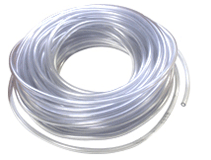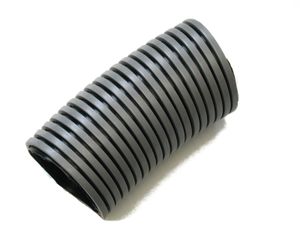Difference between revisions of "Plastic Tubing"
Jump to navigation
Jump to search
m |
|||
| Line 1: | Line 1: | ||
[[Category:Piping]]{{Knoppen}} | [[Category:Piping]]{{Knoppen}} | ||
[[File:Plastic tubing.gif|thumb|right|Plastic Tubing]] | [[File:Plastic tubing.gif|thumb|right|Plastic Tubing]] | ||
[[File:Plastic Tubing1.jpg|thumb|right|Plastic Tubing]] | [[File:Plastic Tubing1.jpg|thumb|right|Plastic Tubing]] | ||
'''Plastic Tubing''' is widely used for its light weight, chemical resistance, non-corrosive properties, and ease of making connections. Plastic materials include polyvinyl chloride (PVC) | '''Plastic Tubing''' is widely used for its light weight, chemical resistance, non-corrosive properties, and ease of making connections. | ||
Plastic materials include: | |||
* polyvinyl chloride (PVC) | |||
* chlorinated polyvinyl chloride(CPVC) | |||
* fibre reinforced plastic (FRP) | |||
* reinforced polymer mortar (RPMP) | |||
* polypropylene(PP) | |||
* polyethylene(PE) | |||
* cross-linked high-density polyethylene (PEX) | |||
* polybutylene (PB) | |||
* acrylonitrile butadiene styrene (ABS | |||
In many countries, PVC pipes account for most pipe materials used in buried municipal applications for drinking water distribution and waste water mains. | |||
Latest revision as of 03:47, 13 March 2014
Plastic Tubing is widely used for its light weight, chemical resistance, non-corrosive properties, and ease of making connections.
Plastic materials include:
- polyvinyl chloride (PVC)
- chlorinated polyvinyl chloride(CPVC)
- fibre reinforced plastic (FRP)
- reinforced polymer mortar (RPMP)
- polypropylene(PP)
- polyethylene(PE)
- cross-linked high-density polyethylene (PEX)
- polybutylene (PB)
- acrylonitrile butadiene styrene (ABS
In many countries, PVC pipes account for most pipe materials used in buried municipal applications for drinking water distribution and waste water mains.

